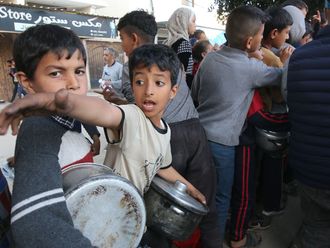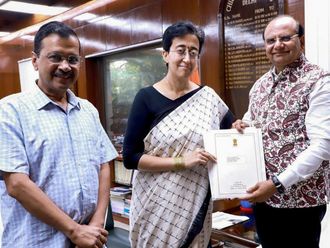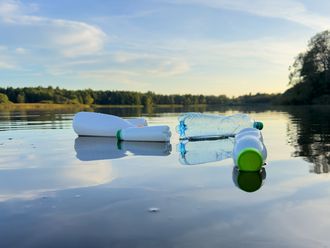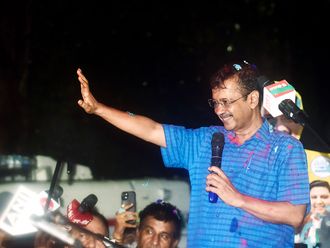Fundamental to living, water is becoming a scarce resource in India. Drought has become a part of people's lives in the rural areas, and water scarcity, a part of urban life. The problem is so severe that even Cherapunji, the place that receives the highest amount of rainfall in the world, is facing a water crisis.
Without water security, it is impossible to ensure food and energy security, both of which are essential for development and poverty alleviation in a developing country like India. After decades, we can now talk of food surplus and hence food security and to a certain extent energy (power) security. All will be lost, however, if Indians face a water crisis. Simply put, a good harvest means a good year for all Indians. For this, water security is essential and a water crisis needs to be avoided at all costs.
Drought and water scarcity have become issues on which elections can be won or lost, and water disputes between states are becoming increasingly common. Suddenly water has become a geo-political strategy tool and one wonders if water wars might become a reality. After all, Indian rivers flow into neighbouring countries such as Pakistan and Bangladesh. Some leaders on the Indian subcontinent claim that large dams, like the Three Gorges Dam of China, are the only way to ensure water security. Are we heading for water wars and environmental disasters?
There is agreement among different groups such as non-governmental organisations (NGOs), farmers, liberals, government, and international institutions like the Asian Development Bank, that water is a finite resource and needs to be managed carefully to ensure water security and thus economic prosperity. But there is disagreement on the methodology to achieve this. The NGO versus government debate currently boils down to just one point; who gets to control the water, the government or the people?
The government naturally wants to continue controlling water resources as it has been doing all along. However, many officials agree better governance of this resource is essential. The success story of the Hyderabad Metropolitan Water Supply and Sewerage Board is often cited as an example of how better governance leading to water security can be achieved by government bodies themselves. But can this be replicated in other areas considering the diversity of the region and the politics of water? Afraid not, as the reasons for water problems are different in the regions of the Indian subcontinent. Some can be attributed to poor management of water while in others it is scarcity.
Decentralise the process, say other experts, as according to them water is not a commodity but a common good. Nafisa Barot, executive trustee of Utthan, a Gujarat-based NGO, cites her experience of how almost no government control in addition to complete community involvement in over 150 villages across Gujarat have changed the situation from one of water scarcity to water security in these areas.
Contamination
Nowadays, usable water isn't necessarily potable. All households boil and filter water because groundwater is high in salt or silt content. Also, the more wastewater we generate, the greater the danger of water pollution and contamination of available freshwater resources, which in turn leads to increasing health problems and hence health costs.
While industries are supposed to process the water with which they make soft drinks or bottled water, lack of consumer awareness among Indians and developing countries in general about consumer rights make us susceptible to paying for unsafe products.
So the key word is "safe" water and not just water for all. This means better water processing and management. Who can do this and how do we bear the costs involved? Can the people themselves take care of it, or should it be the government, or should we involve the private sector?
Remember the Cola scandal and the study by India's Centre for Science and Environment, which discovered unacceptable levels of pesticides in soft drinks? It is important to remember the major ingredient of these soft drinks is groundwater. Soft-drink-bottling plants are located on village outskirts, where they buy large amounts of cheap farmland from villagers. Pesticide levels in the water are bound to be high. This is bad practice for two reasons. The soft drink companies completely exploit groundwater sources in these areas, thereby making farmlands in neighbouring areas drought ridden. By deep bore drilling with heavy machinery, they can drain the drinking water that, after a process of natural filtration, reaches the village. So what they are actually doing is causing drought and a drinking water shortage, resulting in village wells drying up.
Meanwhile, there is another problem as far as safety is concerned. Industries discharge effluents into rivers from which we use water for drinking and sanitation. Harmful chemicals such as arsenic are present in the water we drink. In Bangladesh, it was discovered that arsenic is present in unacceptable levels in the groundwater, slowly poisoning the people to death. Remember Erin Brokovich? Well, Bangladesh needs one immediately.
As for bottled mineral water in India, the impurities scandal started before the Cola scandal but didn't receive much media attention.
So how safe is the water? The simple answer is people don't know as they don't ask questions or demand certification from the Food and Drug Administration.
While not a single human being can survive without water, it doesn't make sense if we get sick because of the water we consume. Others don't pay our health bills, we do. The mantra has to be ‘safe water first'.
Deepa Kandaswamy is an award-winning writer, political analyst and author based in India.











